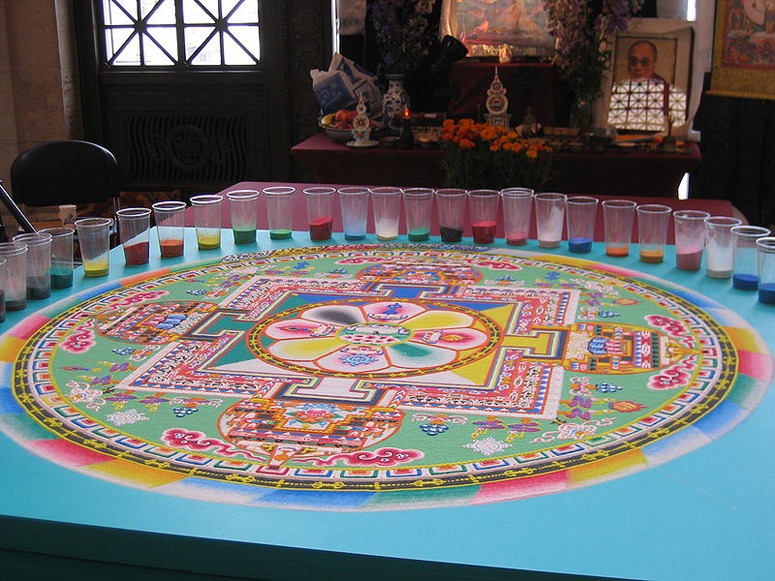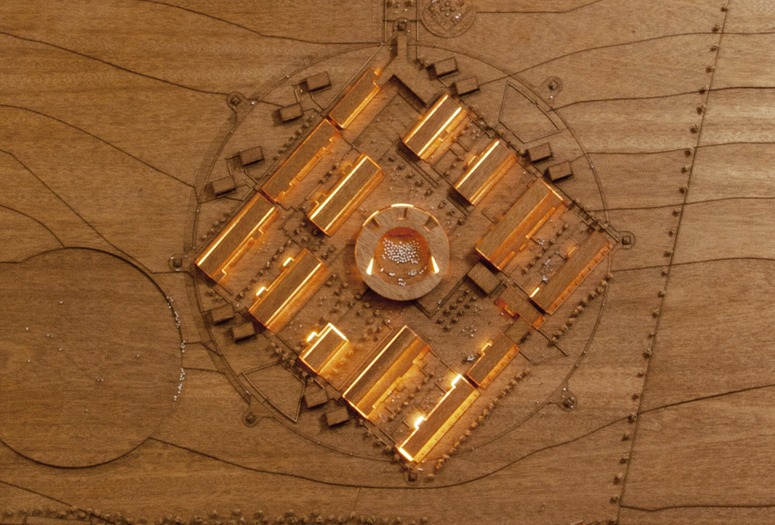The principle of involving school children in the landscape and garden design for the space outside their classrooms applies in every land. This video illustrates the involvement of children from the Druk White Lotus School in Ladakh India. There are many reasons for involving school children in the design of school grounds: (1) the children are creative – they know what they like to look at and what facilities they like to have (2) the children learn to take responsibility for their environment (3) the children have an involvment with the natural world (4) the children learn technical skills (5) with luck, some of the children will go on to become landscape architects, taking responsibility for the conservation and improvement of Planet Earth.
Category Archives: DWLS Dragon Garden at Druk White Lotus School
DWLS Dragon Garden in Shey, Ladakh, for the Druk White Lotus School
The architectural layout of the Druk White Lotus School, designed by Arup Associates, is based on a mandala. In the Sanskrit of the Rig Veda, the sections were called mandalas, meaning ‘cycles’ or ‘chapters’, rather as TS Eliot divided his Four Quartets into sections. The Rig Veda poems are often described as hymns and were receited by nomads on ritual occasions. When the nomads became settlers special places, including temples, were designed for rituals and they too became known as mandalas. Hindu and Buddhist sacred places, including stupas, are therefore said to have a mandala plan. In Tibetan and Ladakhi culture, which are Vajrayana Buddhist, a mandala is interpreted as a diagram which represents the geography of the cosmos.
The Druk White Lotus School (DWLS) was built in the desert outside Shey, the former capital of Ladakh. The buildings are nearing completion in 2012 and the next stage is to convert the school surroundings from desert to garden and landscape. Since the school was made under the auspices of the Drukpa Lineage, making a ‘Dragon Garden’ is appropriate. ‘Druk’ means ‘Dragon’ and ‘Druk-pa’ means ‘Dragon-person’, with the Lineage led by the Gyalwang Drukpa. What form a ‘Dragon Garden’ might have is yet to be determined.
The above video shows a school ritual (a morning assembly) taking place in a Dharma Wheel at the centre of the DWLS Mandala. Note that the children sitting beside the monk are using their hands to form the mudras. My impression is of kindly, enthusiastic and warm-hearted children – and I wish I had a similar impression when looking at school children in london.
Mandalas can take many forms and can be made in many ways. The below image shows coloured sands used to make a sand mandala.
A model of the mandala section of the plan for the Druk White Lotus School, by Arup Associates.


